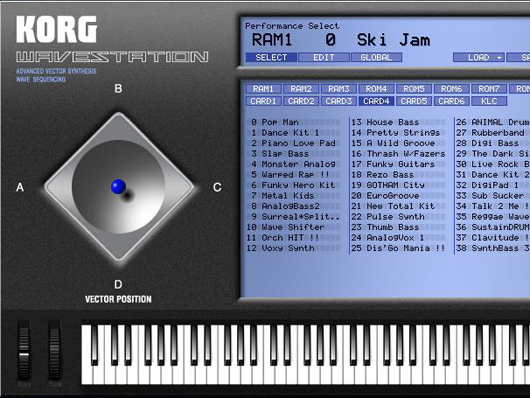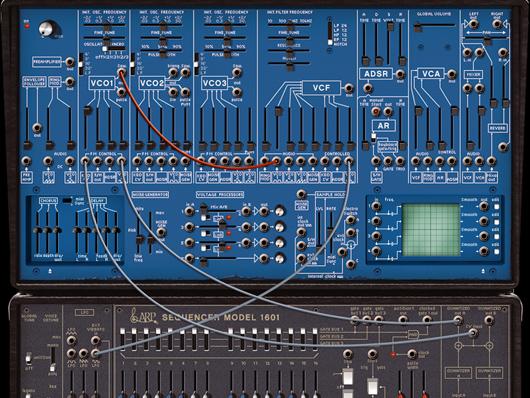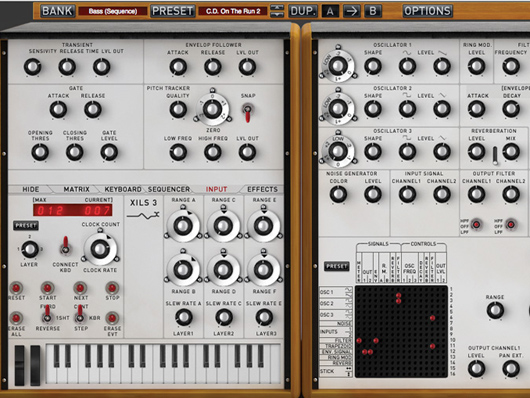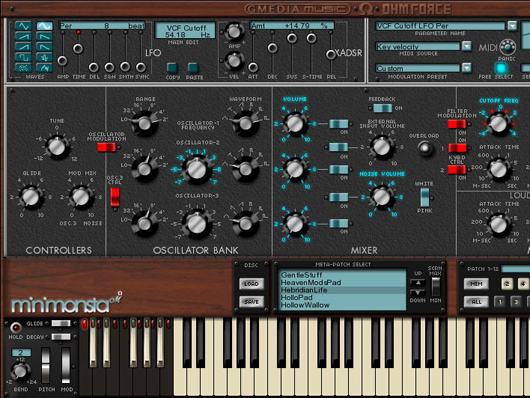The 10 greatest synths of all time… in software!

Legends reborn
By now, we hope you’ve acquainted yourself with the 10 greatest synths of all time (if not, we advise you to do so right now). It’s a hugely impressive list of hardware, but it might have left you feeling disappointed that you can’t actually own any of these instruments (most go for silly money on the second-hand market).
Happily, though, we have a solution - ten solutions to be precise. The good news is that each of the instruments in our rundown has been emulated in software (or there’s a ready-made software equivalent), so if you’ve got a computer, you can make them live and breathe again. Read on to find out more…
NEXT: Oberheim’s OB-X on your desktop

Sonicprojects OP-X
We weren’t sure that a virtual Oberheim OB-X existed, but here it is. The OP-X was created on a voice-by-voice basis, which its developer claims has resulted in maximum authenticity. It’s available both as a Windows VST plug-in and Reaktor Ensemble.

Spectrasonics Omnisphere
Omnisphere isn’t an emulation of a hardware synth, so what’s it doing here? Well, the truth is that there are no software versions of Roland’s JD-800, but its creator, Eric Persing, is also responsible for Spectrasonics’ super-instrument. This contains plenty of JD-800-type sounds, and many more besides.

Arturia CS-80V
Yamaha’s CS-80 sounded great, but was also huge and unstable. Arturia’s CS-80V sounds great, but weighs nothing and runs reliably. It also benefits from a Multi mode that enables you to assign a different sound to each of the eight voices, a modulation matrix and in excess of 400 presets.

Korg Legacy Collection Digital Edition
Rather than wait for another company to emulate the Wavestation and get it wrong, Korg did it themselves. Their virtual version forms part of the Legacy Collection Digital Edition, which also contains a software M1 and a multi-effects plug-in.

Native Instruments FM8
NI made a fine fist of recreating Yamaha’s DX7 with the FM7, and its sequel, FM8, is even better. Thanks to the presence of the Easy page, anyone can start programming FM synthesis sounds, though with so many great presets on offer and the option to import SysEx data from Yamaha’s original hardware, you might not need to bother.

Arturia ARP2600V
We turn once again to Arturia for a plug-in version of ARP’s 2600 - this includes all the parameters of the original. The inclusion of chorus and delay units may annoy the purists, but if you’re looking for total authenticity, you can always switch them off.

Waldorf Edition Plug-in Suite
The PPG Wave 2.V was one of the first VST instruments to make musicians realise that classic synths really could run inside your computer, and it’s still available in this dirt cheap bundle. The other inclusions are the Attack percussion synth and D-Pole filter.

Arturia Prophet-V
Sadly, Native Instruments’ Pro-53 has just been discontinued, but those seeking a virtual Prophet-5 can still get one via Arturia. What’s more, the Prophet-V also contains an emulation of the Prophet-VS, Sequential Circuits’ final synth, while the Prophet Hybrid stacks the two instruments together.

XILS-lab XILS 3
Although the XILS 3 has its own identity, it’s clearly inspired by EMS’s VCS3 (a look at the right-hand panel of the interface should tell you as much), and can certainly produce most of that synth’s famous sounds. You even get the mind-bending ‘trapezoid’ envelope generator.

GForce Software Minimonsta: Melohman
Arturia offers a straight emulation of the Minimoog, but if you’re looking for a different take on MusicRadar’s greatest synth of all time, try this. Sure, it can operate like a standard Mini, but the Monsta and Melohman features take this instrument to a different level.

I’m the Deputy Editor of MusicRadar, having worked on the site since its launch in 2007. I previously spent eight years working on our sister magazine, Computer Music. I’ve been playing the piano, gigging in bands and failing to finish tracks at home for more than 30 years, 24 of which I’ve also spent writing about music and the ever-changing technology used to make it.
“Excels at unique modulated timbres, atonal drones and microtonal sequences that reinvent themselves each time you dare to touch the synth”: Soma Laboratories Lyra-4 review
e-instruments’ Slower is the laidback software instrument that could put your music on the fast track to success
“Excels at unique modulated timbres, atonal drones and microtonal sequences that reinvent themselves each time you dare to touch the synth”: Soma Laboratories Lyra-4 review
e-instruments’ Slower is the laidback software instrument that could put your music on the fast track to success









